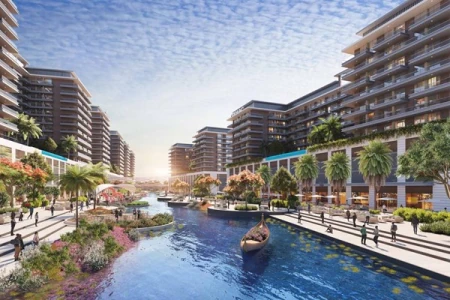
Surging Global Demand for Oil and Gas Fueled by Booming Data Centers, Says Energy Minister
The UAE is leading the global race in artificial intelligence adoption while positioning itself as a major player in the world's evolving energy landscape. At the Abu Dhabi International Petroleum Exhibition "ADIPEC," Energy Minister Suhail Al Mazrouei highlighted how AI and data centers are reshaping global energy demand — and how the UAE is getting ready for what comes next.
A recent Microsoft study shows the UAE ranks first globally in AI usage at 59.4%, nearly four times the global average of 15%. But here's where it gets interesting: this AI boom is creating massive energy demands that few countries saw coming.
Al Mazrouei explained that electricity demand has quadrupled to power the giant data centers being built worldwide, especially in the US, China, and other major economies. These facilities need enormous amounts of power for computing and cooling systems. The UAE recognized this trend early and has been preparing its energy infrastructure accordingly.
This creates a complex picture for oil and gas demand. While renewable energy costs keep falling — particularly wind power and battery storage — the massive power requirements of data centers mean fossil fuels will still play a crucial role in meeting global energy needs. Al Mazrouei expects oil and gas demand to grow in the medium and long term to support this digital infrastructure boom.
The UAE's energy strategy reflects this reality. The country has built what Al Mazrouei calls an "integrated energy system" that doesn't pick winners and losers. Instead, it combines oil, natural gas, renewables, and nuclear power in a diversified mix. Clean energy now accounts for over 30% of the national electricity mix in 2024, up from much lower levels just a few years ago.
The numbers show serious commitment. The UAE currently has 6.8 gigawatts of renewable capacity installed, with projects underway that will boost total capacity to 22 gigawatts by 2031. The government updated its Energy Strategy 2050 in 2024, raising the clean electricity target to 35% by 2031, up from the previous 32% goal.
Solar, nuclear, and low-emission hydrogen projects have become core pillars of the national energy system. The updated strategy also integrates the National Hydrogen Strategy 2050, making hydrogen a key component for achieving climate neutrality while focusing on regional and international electrical grid connections.
For energy markets, this approach matters because it shows how major oil producers are adapting to changing demand patterns. The UAE remains an active OPEC and OPEC+ member, helping coordinate global supply decisions. But it's also betting heavily on technologies that could reduce long-term oil dependence.
Al Mazrouei emphasized that the UAE sees carbon reduction and energy security as complementary goals, not competing ones. The country is investing in energy efficiency programs for buildings that can cut consumption by up to 30%, while also maintaining the capacity to meet growing electricity demand from its digital economy ambitions.
At ADIPEC's ministerial roundtable on energy security and resilience, Al Mazrouei outlined the UAE's strategy built on four main pillars: diversification, backup resilience, affordable costs, and system durability. This framework supports the country's long-term sustainable development vision through integrated planning, regional cooperation, and innovation.
The UAE's approach offers a template for other energy-rich nations navigating the transition. Rather than abandoning fossil fuels entirely, it's building a flexible system that can adapt to changing global energy needs while steadily increasing clean energy capacity. This strategy positions the country to benefit from both traditional energy exports and emerging clean technology markets.
 Layla Al Mansoori
Layla Al Mansoori







